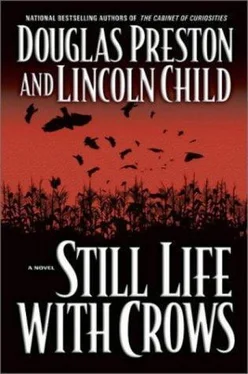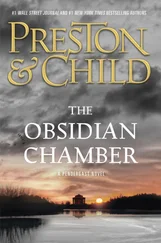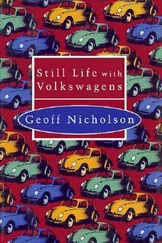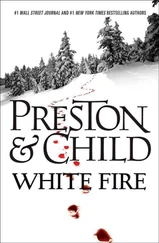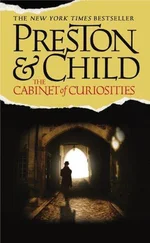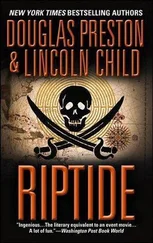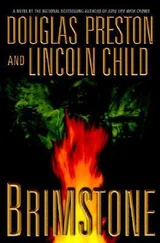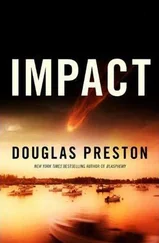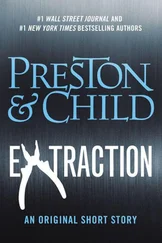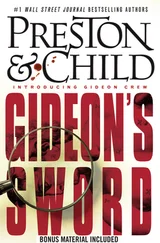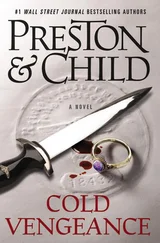Douglas Preston - Still Life With Crows
Здесь есть возможность читать онлайн «Douglas Preston - Still Life With Crows» весь текст электронной книги совершенно бесплатно (целиком полную версию без сокращений). В некоторых случаях можно слушать аудио, скачать через торрент в формате fb2 и присутствует краткое содержание. Жанр: Триллер, на английском языке. Описание произведения, (предисловие) а так же отзывы посетителей доступны на портале библиотеки ЛибКат.
- Название:Still Life With Crows
- Автор:
- Жанр:
- Год:неизвестен
- ISBN:нет данных
- Рейтинг книги:5 / 5. Голосов: 1
-
Избранное:Добавить в избранное
- Отзывы:
-
Ваша оценка:
- 100
- 1
- 2
- 3
- 4
- 5
Still Life With Crows: краткое содержание, описание и аннотация
Предлагаем к чтению аннотацию, описание, краткое содержание или предисловие (зависит от того, что написал сам автор книги «Still Life With Crows»). Если вы не нашли необходимую информацию о книге — напишите в комментариях, мы постараемся отыскать её.
Still Life With Crows — читать онлайн бесплатно полную книгу (весь текст) целиком
Ниже представлен текст книги, разбитый по страницам. Система сохранения места последней прочитанной страницы, позволяет с удобством читать онлайн бесплатно книгу «Still Life With Crows», без необходимости каждый раз заново искать на чём Вы остановились. Поставьте закладку, и сможете в любой момент перейти на страницу, на которой закончили чтение.
Интервал:
Закладка:
He returned to the bed, laid one hand lightly upon the bedspread. It had been needlepointed in a pattern of roses and peonies. He examined the stitching closely. Hand done. It had taken someone—no doubt Miss Kraus herself—at least a year.
Pendergast remained motionless, staring at the needlepoint, breathing the antique air of the bedroom. Then, straightening, he walked across the creaking floorboards to the old rippled window and looked out.
To his right and down, set back from the house, Pendergast could see the shabby low metal roof of the gift shop. Behind, a cracked cement walkway ran down to a depression leading to a rupture in the earth, where it disappeared into darkness. Beside the gift shop, a peeling sign read:
KRAUS’S KAVERNS
THEBIGGESTCAVE INCRYCOUNTY, KANSAS
MAKE AWISH IN THEINFINITYPOOL
PLAY THEKRYSTALCHIMES
SEE THEBOTTOMLESSPIT
TOURS AT10:00AND 2:00 DAILY
TOURGROUPS, BUSESWELCOME
He tried the window, found it opened with surprising ease. A muggy flow of air came into the room, carrying with it the smell of dust and crops. The lace curtains bellied. Outside, the great sea of yellow corn stretched to the horizon, broken only by distant lines of trees along the bottomlands of Medicine Creek. A flock of crows rose out of the endless corn and fell back in, feasting on the ripe ears. Thunderheads piled up to the west. The silence was as unending as the landscape.
In the hallway at the bottom of the stairs, Winifred Kraus replaced the telephone in its cradle. Jenny Parker wasn’t in. Perhaps she was in town, getting news. She’d try calling again after lunch.
She wondered if she should bring the nice man, Mr. Pendergast, a second glass of tea. Southerners were so well-bred; she believed they drank a lot of iced tea on big shady verandas and such. It was such a hot day and he’d walked from town. She went into the kitchen, poured a fresh glass, began mounting the stairs. But no—she should let him unpack, have his privacy. What was she thinking? News of the murder had her all in a tizzy.
She turned to descend the staircase. But then she stopped again. A voice had sounded from upstairs: Pendergast had said something. Was he speaking to her?
Winifred cocked her head, listening. For a moment, the house was still. Then Pendergast spoke again, and this time, she made out what he was saying.
“Excellent,” came the dulcet voice. “Most excellent.”
Six
T he road was as straight as the nineteenth-century surveyor’s original line of sight, and it was flanked by two unmoving walls of corn. Special Agent Pendergast walked down the shimmering road, his polished black oxfords—handmade by John Lobb of St. James’s Street, London—leaving a row of faint impressions in the sticky asphalt.
Ahead, he could see where heavy vehicles had come in and out of the cornfield, leaving brown tracks and clots of dirt on the road. Approaching, he turned to make his way along the crude access road that had been bulldozed into the cornfield to the murder site. His feet sank into the powdery earth.
Where the access widened into a makeshift parking lot a state trooper cruiser sat, motor running, water dripping into the dirt from the AC. Yellow crime-scene tape blocked off the site, wound around tall stakes hammered into the earth. Inside the cruiser a trooper sat, reading a paperback.
Pendergast approached and rapped on the window. The man gave a start, then quickly recovered. Hastily putting the paperback aside, he got out and faced Pendergast, squinting in the hot sun, hooking his arms into his belt loops. A river of cool air flowed out.
“Who the hell are you?” he demanded. The trooper’s arms were covered with fine red hair and the leather of his boots creaked as he moved.
Pendergast displayed his shield.
“Oh. FBI. Sorry.” The trooper looked around. “Where’s your car?”
“I’d like to take a look at the scene,” Pendergast replied.
“Be my guest. There’s nothing left, though. It’s all been carted away.”
“No matter. Please don’t allow me to disturb you further.”
“Quite all right, sir.” The trooper, with no little relief, climbed back into his cruiser and closed the door.
Pendergast moved past the car and gingerly ducked beneath the yellow tape. He advanced the last twenty yards to the original clearing. Here he paused, surveying the site. As the trooper had said, it was empty: nothing but dirt, crushed corn stubble, and thousands of footprints. There was a stain in the very center of the clearing, not particularly large.
For several minutes, Pendergast remained motionless beneath the merciless sun. Only his eyes moved as they took in the clearing. Then he reached into his suit jacket and removed a photograph of the body in situ, from close up. Another photograph showed the overall site, the spitted birds and the forest of sticks. Pendergast rapidly reconstructed the original scene in his mind and held it there, examining it.
He remained motionless for a quarter of an hour. Then at last he returned the photographs to his jacket and took a step forward, examining the stub of a cornstalk that lay at his feet. It had been broken, not cut. Moving forward, he picked up a second stub, then a third and a fourth. All broken. Pendergast returned to the edge of the clearing, selected a cornstalk that still stood. He knelt down and grasped it at the bottom, but no matter how hard he tried, he could not break it.
He ventured farther into the clearing itself. It hardly mattered where he put his feet—it could not be more disturbed. He moved slowly, crouching now and then to examine something in the riot of corn and dust. Once in a while he would pick up something with a pair of tweezers he’d removed from a suit pocket, look at it, and release it. For almost an hour he moved across the clearing in this fashion, bent over in the baking sun.
He kept nothing.
At last, he reached the far end of the clearing and moved into the dense corn rows themselves. There had been a few pieces of torn fabric found clinging to some of the cornstalks, and it wasn’t difficult to find the tags marking their locations.
Pendergast moved down the row, but there were so many footprints and dog prints that it was hopeless to try to follow anything. The report said that two different sets of bloodhounds had been put on the track but had refused to follow it.
He paused in the forest of corn to slip a tube of glossy paper from his pocket and unroll it. It was a photograph, taken at some unidentified point before the crime, showing the field from the air. The corn rows did not go in straight lines, as it seemed at ground level, but rather curved to follow the topography of the landscape, creating elliptical, mazelike paths. He located the row in which he stood and carefully traced its curve. Then, with difficulty, he forced his way into the next corn row, then the next. Once again he examined the aerial photograph, tracing the path of the current row. Much better: it went for a long distance across flat ground and then dropped down toward the bottomland near Medicine Creek, at a point where the creek looped back toward the town.
It was, in fact, the only row that actually opened onto the creek.
Pendergast walked down the row, heading away from the murder site. The heat had settled into the corn and, in the absence of wind, was baking everything into place. As the land gradually declined toward the creek, a monotonous landscape of corn revealed itself, stretching to an ever more remote horizon, oppressive in its landlocked vastness. The distant creek, with its clumps of scraggly, half-dead cottonwoods, only added to the sense of desolation. As Pendergast walked he would stop occasionally to examine a cornstalk or a piece of ground. Once in a while his tweezers would pluck something up, only to drop it again.
Читать дальшеИнтервал:
Закладка:
Похожие книги на «Still Life With Crows»
Представляем Вашему вниманию похожие книги на «Still Life With Crows» списком для выбора. Мы отобрали схожую по названию и смыслу литературу в надежде предоставить читателям больше вариантов отыскать новые, интересные, ещё непрочитанные произведения.
Обсуждение, отзывы о книге «Still Life With Crows» и просто собственные мнения читателей. Оставьте ваши комментарии, напишите, что Вы думаете о произведении, его смысле или главных героях. Укажите что конкретно понравилось, а что нет, и почему Вы так считаете.
